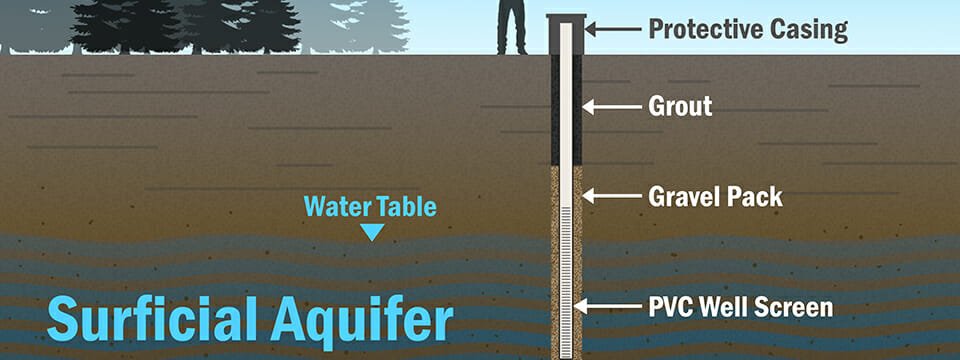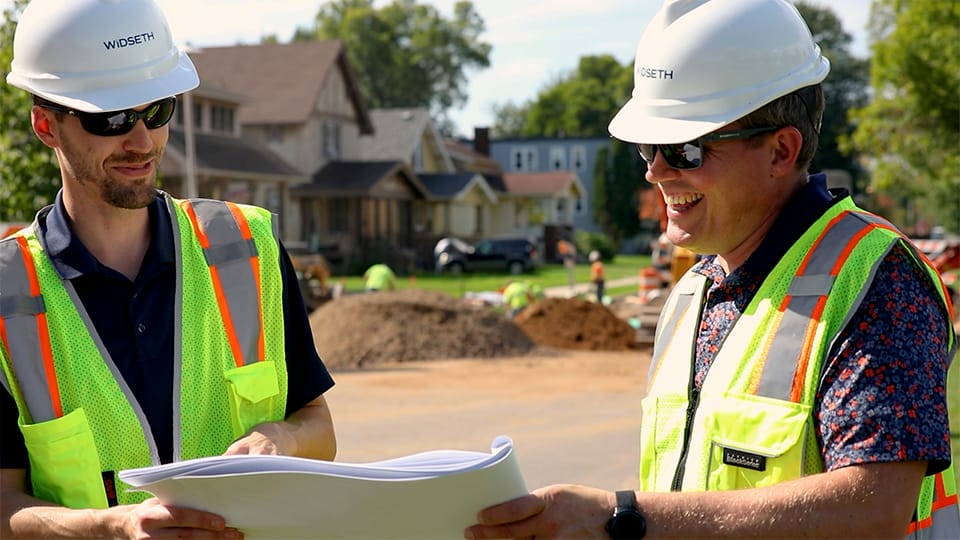Most of us take clean water for granted. We expect it and won’t settle for anything less. But, we may not give much thought to where our water comes from and what, if any, contaminants are included.
Minnesota’s Ambient Groundwater Monitoring Network program is one piece of the puzzle that ensures quality water across the state. Think of this as a Navy SEAL special ops mission where environmental scientists are battling sewer monsters and . . . well, maybe it’s not that exciting, but pretty close.
The monitoring program has two objectives. The first is to determine the current condition of groundwater in surficial aquifers, which are located just below the surface in the uppermost saturated zone and are most vulnerable to contamination. The second objective is to identify trends in water quality over time. Widseth has assisted the Minnesota Pollution Control Agency (MPCA) in this effort and is currently wrapping up a multi-year monitoring well installation program that includes locating and installing 78 surficial wells across the northern half of the state.
Well location is based on specific criteria from the MPCA including land use type and surficial geologic parameters. Once a suitable site is located, a Widseth environmental scientist conducts reconnaissance to determine site accessibility, collect photographs, and obtain the necessary access agreements with the land owner. Widseth then coordinates drilling, soil sampling, monitoring well installation, and completes a well report for the MPCA and landowner. The well borings are, on average, 25-30 feet deep and eight inches wide. Within the boring is a two-inch PVC pipe. At the bottom portion of the PVC pipe is a screen, which allows water to flow through the well. After the well has been pumped and developed, a hydrologist from the MPCA will continue to sample the well annually.
Sometimes contaminants such as nitrates, volatile organic compounds (VOCs) and chloride find their way into groundwater supplies. Because surficial aquifers generally hold water that is less than one year old, establishing a network of wells across the state that monitors relatively young groundwater allows the MPCA to implement best management practices quickly if contamination trends arise. This means lakes, rivers, and water used for irrigation and agricultural purposes will remain clean.
The well monitoring project began in 1989 and lasted until 2001. It was reestablished in 2003. In 2004 the Minnesota Department of Health, Minnesota Department of Agriculture, and the MPCA completed a Memorandum of Agreement that described monitoring responsibilities for each agency. Starting in 2009, Widseth’s work has helped MPCA enhance the Ambient Groundwater Monitoring Network using Clean Water Land and Legacy Amendment funds to install additional monitoring wells.
The Ambient Groundwater Monitoring Network provides assurance that Minnesota’s groundwater resources will remain safe for future generations.




